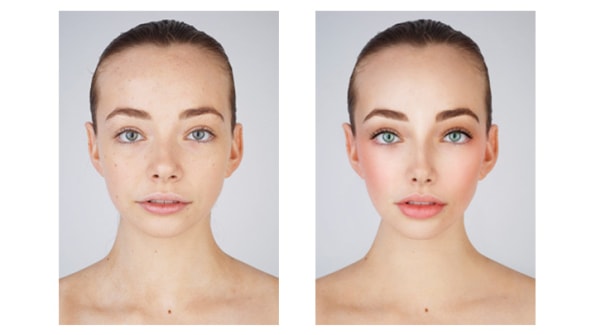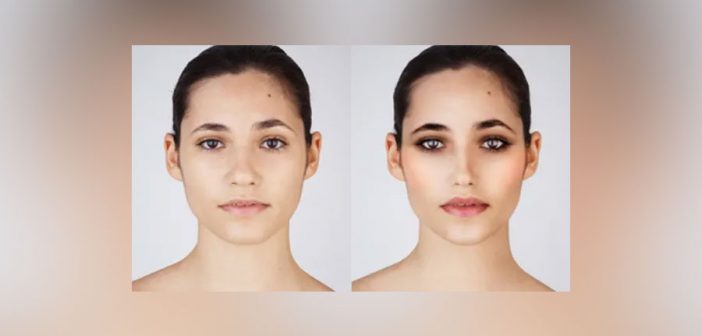A famed photographer asked teenagers to edit their own portraits for social media. The twist? The subjects like their unaltered “before” shots better.
![[Photos: Rankin]](https://images.fastcompany.net/image/upload/w_562)
The photographer recently asked a group of teenage subjects to do just that. Selfie Harm is the latest portrait series from Waddell, in collaboration with M&C Saatchi and MT Art Agency. He photographed 15 teens on neutral backdrops, wearing little to no makeup. And then he instructed them to take that photo and edit it inside Facetune, optimizing their own faces to get the maximum amount of likes on social.

For the finished portrait series, Waddell displays these two portraits side by side. The first is always a beautiful snapshot of youth. The second? A funhouse mirror, capturing how we see ourselves through the lens of social media optimization.“[There were] lots of patterns, even for the boys. Bigger eyes, smaller noses and skinnier necks were the main ones. But smoothing the skin and brightening the eyes are more subtle ones,” Rankin writes over email. “There is no question that this homogeneous idea of beauty and perfection is pervasive. But the apps also push you in that direction in the way they are designed.”
Rankin himself admits that his work has been part of the problem. In his press release, Waddell offers a mea culpa. “I have a long and problematic history of working with and battling against this movement of image manipulation. At one point celebrities, brands, and magazines would tirelessly demand the use of Photoshop, and so it became a large part of my job.”
The difference now, however, is that Photoshop is no longer a professional tool that’s shaping cultural sensibilities through ads and magazine covers alone. It’s a one-button filter in apps like Facetune, Instagram, or Snapchat that allows anyone to dramatically alter their image, instantly. And it’s not just easy to do; these interfaces successfully package photo editing as a form of entertainment, because self filters are a highly monetizable form of engagement for companies.
“The thing about these apps is that they are fun. I really enjoyed ‘playing’ with them,” Waddell explains. “A lot of them are designed for kids. We are living in a world of FOMO, sadness, increasing anxiety, and Snapchat dysmorphia. It’s time to acknowledge the damaging effects that social media has on people’s self -image. I hope this project will open up more debate around this issue and encourage more discussion and finding ways, for example hash-tagging, #non-filtered or #not face-tuned, of it becoming positive to be more honest in the fake reality that social media exacerbates.”
The good news is that, even though the teens edited their portraits for social media, they all reported preferring their naturalistic photographs. And looking at the side-by-sides, how could we disagree that flesh and bone humans are more attractive than plastic-molded doll heads with swollen lips and gems for eyes? If nothing else, Selfie Harm makes the superb visual point that we really are beautiful just the way we are.
–
This article first appeared in www.fastcompany.com
Seeking to build and grow your brand using the force of consumer insight, strategic foresight, creative disruption and technology prowess? Talk to us at +9714 3867728 or mail: info@groupisd.com or visit www.groupisd.com




